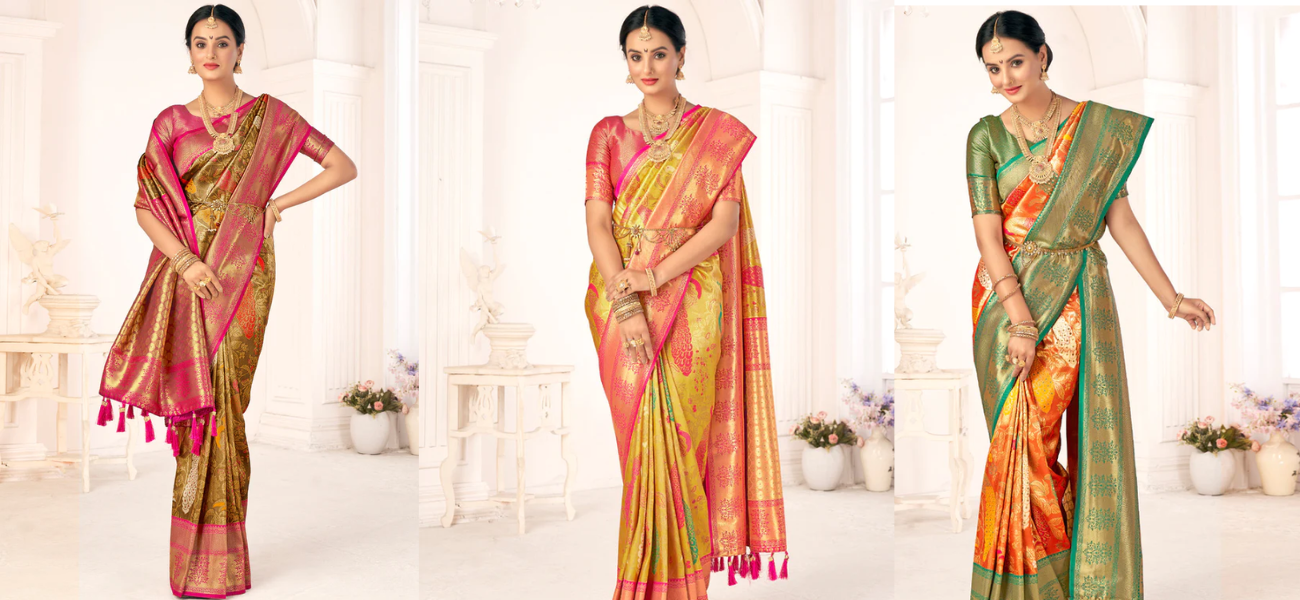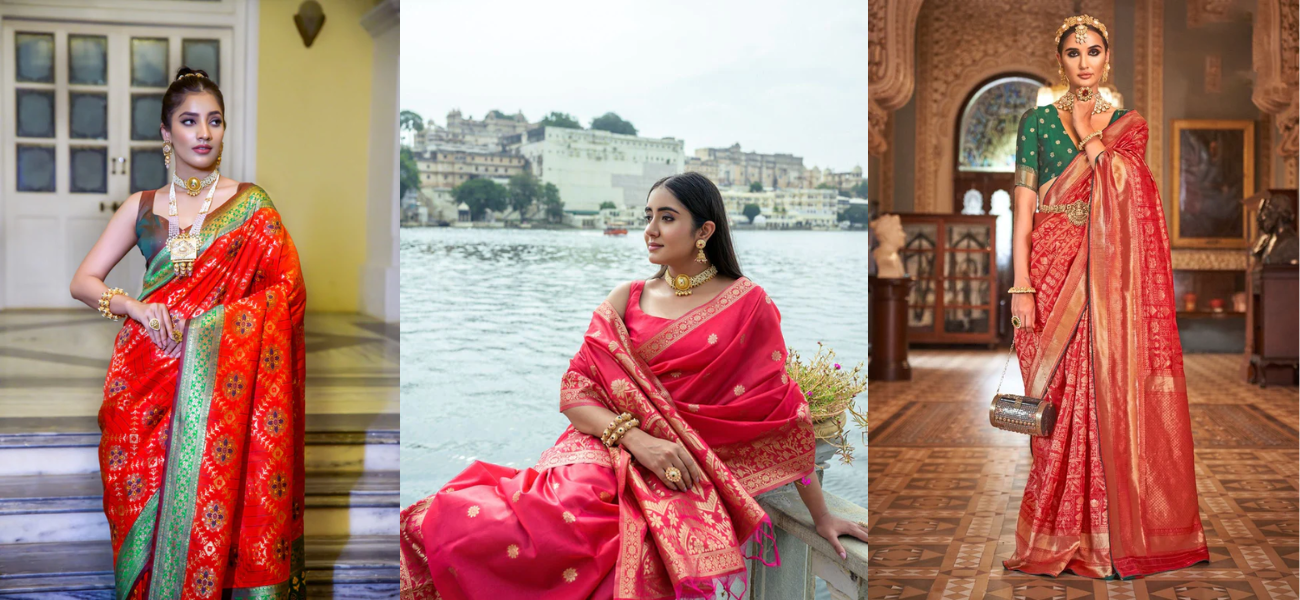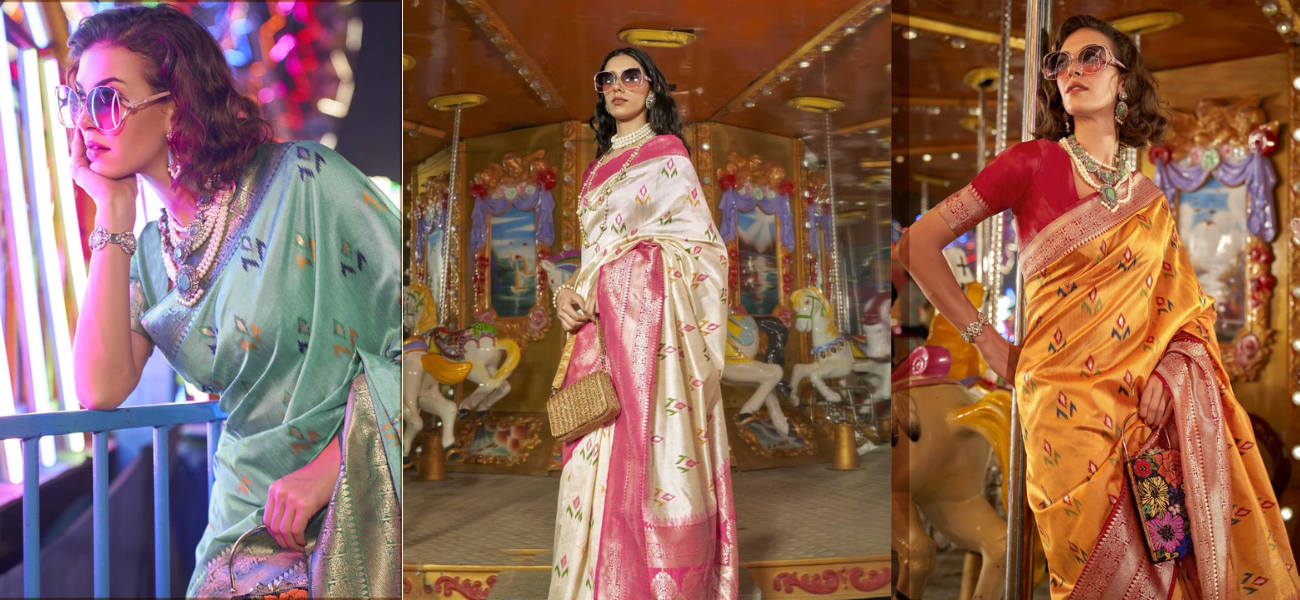
Maa Lakshmi's Saree and Its Cultural Significance
Margashirsha, also known as Margashira or Margasira, is a month in the Hindu calendar that typically falls in November to December. During this month, especially on Thursdays, many devotees perform special worship dedicated to Goddess Lakshmi, known as Margashirsha Lakshmi Pooja. This pooja is observed with the intention of seeking the blessings of Goddess Lakshmi for wealth, prosperity, and overall well-being.
In Margashirsha Laxmi Pooja, worshippers honor Goddess Lakshmi to ask for her blessings related to prosperity, wealth, wisdom, and knowledge. People believe that performing this ritual helps in gaining material wealth and promotes harmony, comfort, happiness, and affluence in the home.

Maa Lakshmi's saree holds profound cultural significance, intertwining spirituality with tradition in Hinduism. The goddess of wealth, prosperity, and fortune, Maa Lakshmi, is often depicted adorned in a saree, symbolizing grace, modesty, and cultural heritage. The saree itself is a traditional Indian garment, a symbol of the country's rich cultural tapestry. In addition to symbolizing tradition, the saree worn by Maa Lakshmi carries aesthetic importance. The vibrant colors, intricate designs, and luxurious fabrics represent the opulence and prosperity that the goddess embodies.
The saree worn by Lakshmi is often depicted in vibrant and luxurious colors like red and green. These colors symbolize wealth, opulence, and prosperity. Red is considered an auspicious and sacred color in Hinduism. It is associated with positive energy, good fortune, and the divine. It is a vibrant and bold color that symbolizes power, passion, and strong emotions. Lakshmi, being a powerful and benevolent goddess, is often depicted in red to convey her authoritative and compassionate nature.
While the predominant and traditional color associated with Maa Lakshmi is often red, the goddess is sometimes depicted wearing green attire as well. The green color also carries its own set of symbolic meanings in Hindu culture. Green is a color associated with nature, growth, and fertility. When Lakshmi is depicted in a green saree, it may symbolize the goddess's connection to the Earth and her role as a bestower of fertility, abundance, and prosperity. Green is linked to healing and well-being. Lakshmi's green attire may symbolize not only material wealth but also the spiritual wealth that contributes to overall well-being and prosperity.
At MySilkLove, our collection of green and red sarees is inspired by the divine elegance of Goddess Lakshmi. Immerse yourself in the richness of cultural traditions and timeless beauty with our meticulously crafted sarees. Our sarees are woven with precision and adorned with intricate details, capturing the essence of tradition and the divine feminine. Each piece at MySilkLove reflects the harmonious blend of color, craftsmanship, and spirituality, allowing you to drape yourself in the grace and abundance reminiscent of the goddess herself.







Leave a comment
This site is protected by hCaptcha and the hCaptcha Privacy Policy and Terms of Service apply.